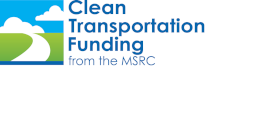 The 2013-14 Legislative session was an important one for advancing cleaner transportation in California. Governor Brown signed several laws that will be critical to increase the number of clean vehicles in the state, improve air quality and reduce greenhouse gas (GHG) emissions.
The 2013-14 Legislative session was an important one for advancing cleaner transportation in California. Governor Brown signed several laws that will be critical to increase the number of clean vehicles in the state, improve air quality and reduce greenhouse gas (GHG) emissions.
Two sister bills - SB 1204 (Lara and Pavley) and SB 1275 (de Leon) - provide funding for cleaner heavy-duty vehicles and passenger vehicles. The California Clean Truck, Bus and Off-Road Vehicle and Equipment Technology Program (SB 1204) will fund the development, demonstration, precommercial pilot, and early commercial deployment of zero- and near-zero emission truck, bus and off-road equipment and technologies. The Charge Ahead California Initiative (SB 1275) will provide incentives to increase the availability of zero- and near-zero emission passenger vehicles aimed at the Governor’s goal of putting 1.5 million electric vehicles on California’s roadways by 2025. Both of these programs will be funded through the Greenhouse Gas Reduction Fund (GGRF) via cap and trade proceeds, and projects located in disadvantaged communities will be prioritized.
 Several bills will help support California’s leadership in the electric vehicle (EV) market. AB 2013 (Muratsuchi) increases from 55,000 to 70,000 cars the number of advanced technology partial zero-emission vehicles that may be allowed in high-occupancy vehicle (HOV) lanes, regardless of the number of passengers in the car. Closely related is AB 1721 (Linder), which allows these vehicles to use High Occupancy Toll (HOT) lanes without paying a toll, or to pay a reduce toll rate. Similarly, SB 1298 (Hernandez) makes Metro’s pilot project of the HOT lanes on the 10 and 110 freeways permanent, which had been a pilot project operated by Metro for the last few years. To encourage more people to drive EVs, AB 2565 (Muratsuchi) requires commercial and residential property owners to approve the installation of EV charging stations by renters, if they meet certain requirements.
Several bills will help support California’s leadership in the electric vehicle (EV) market. AB 2013 (Muratsuchi) increases from 55,000 to 70,000 cars the number of advanced technology partial zero-emission vehicles that may be allowed in high-occupancy vehicle (HOV) lanes, regardless of the number of passengers in the car. Closely related is AB 1721 (Linder), which allows these vehicles to use High Occupancy Toll (HOT) lanes without paying a toll, or to pay a reduce toll rate. Similarly, SB 1298 (Hernandez) makes Metro’s pilot project of the HOT lanes on the 10 and 110 freeways permanent, which had been a pilot project operated by Metro for the last few years. To encourage more people to drive EVs, AB 2565 (Muratsuchi) requires commercial and residential property owners to approve the installation of EV charging stations by renters, if they meet certain requirements.
Two bills of note related to transportation will help curb climate change and improve California’s air quality. SB 605 (Lara) requires the California Air Resource Board (ARB) to develop a strategy to reduce emissions of short-lived climate pollutants (SLCPs). SLCPs are agents that have a relatively short lifetime in the atmosphere and a climate-warming influence that is more potent than carbon dioxide. They include methane and black carbon, or soot. Black carbon primarily comes from the incomplete combustion of fossil fuels, particularly from older diesel engines. Further reductions of SLCP is one of the strategies needed to achieve the goals set out in the AB 32 Climate Change Scoping Plan and meet the statewide 2020 GHG emission target. ARB is developing a work plan to achieve the reductions. SB 1447 (Waldron) allows GGRF money to be invested in traffic signal synchronization as a component of eligible sustainable infrastructure projects. Traffic signal synchronization projects help improve air quality by cutting down on the number cars idling in traffic, thereby reducing vehicle emissions and fuel consumption.
These new laws will help grow the number of cleaner vehicles in use throughout the state, especially in disadvantaged communities, while helping to improve our air quality. Hopefully, the upcoming 2014-15 legislative session will continue the trend of even more clean transportation-related legislation.
